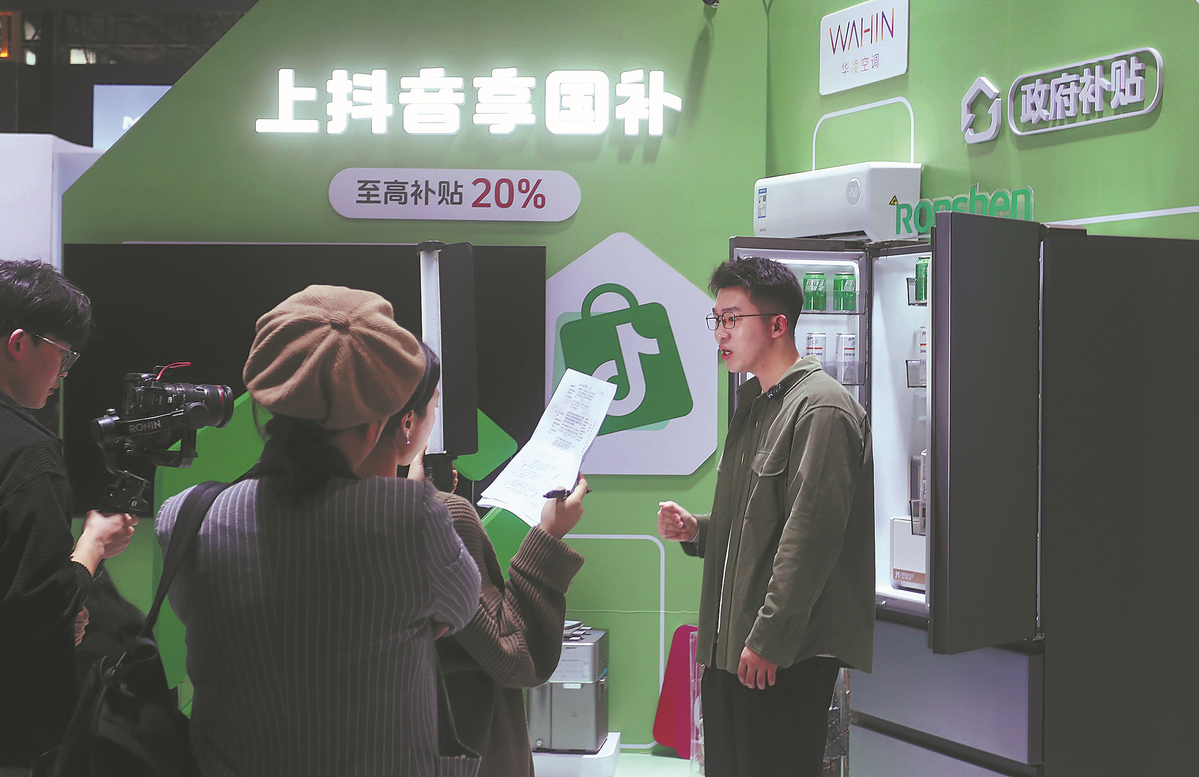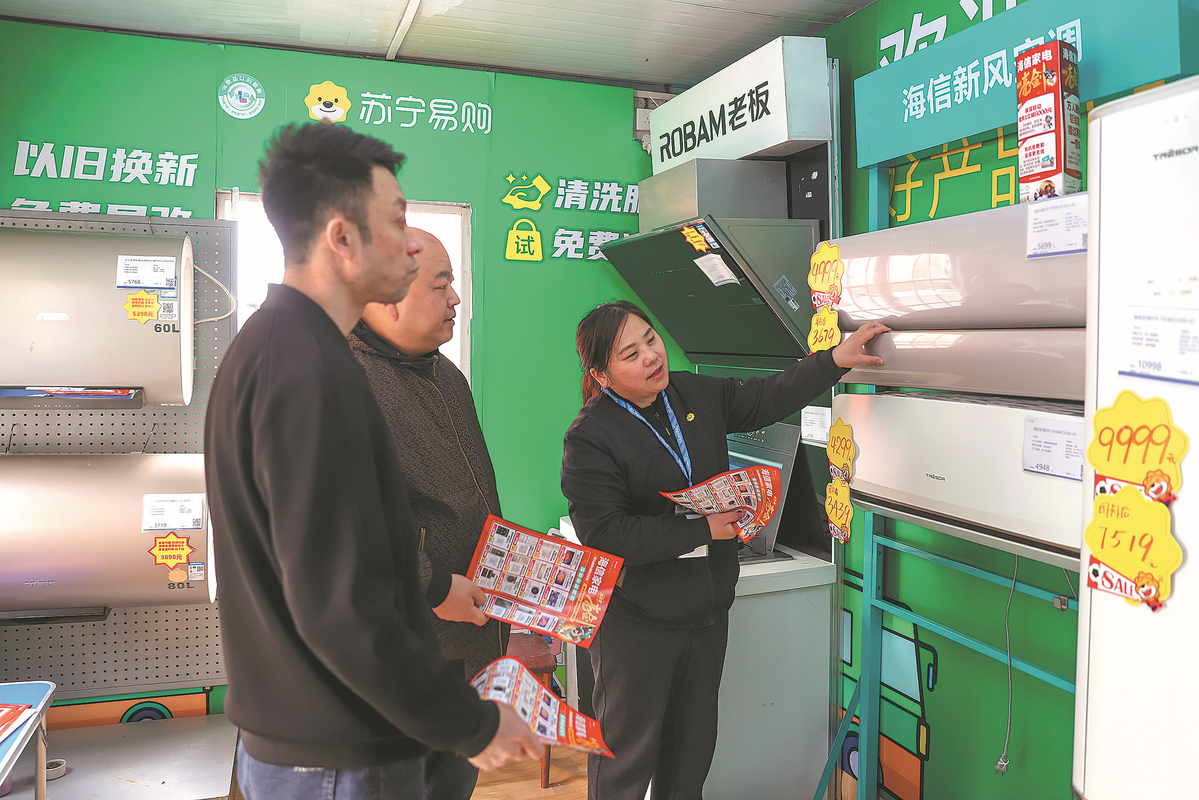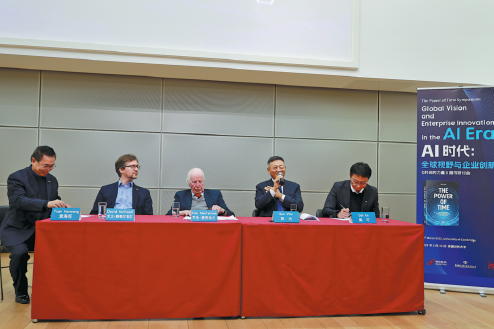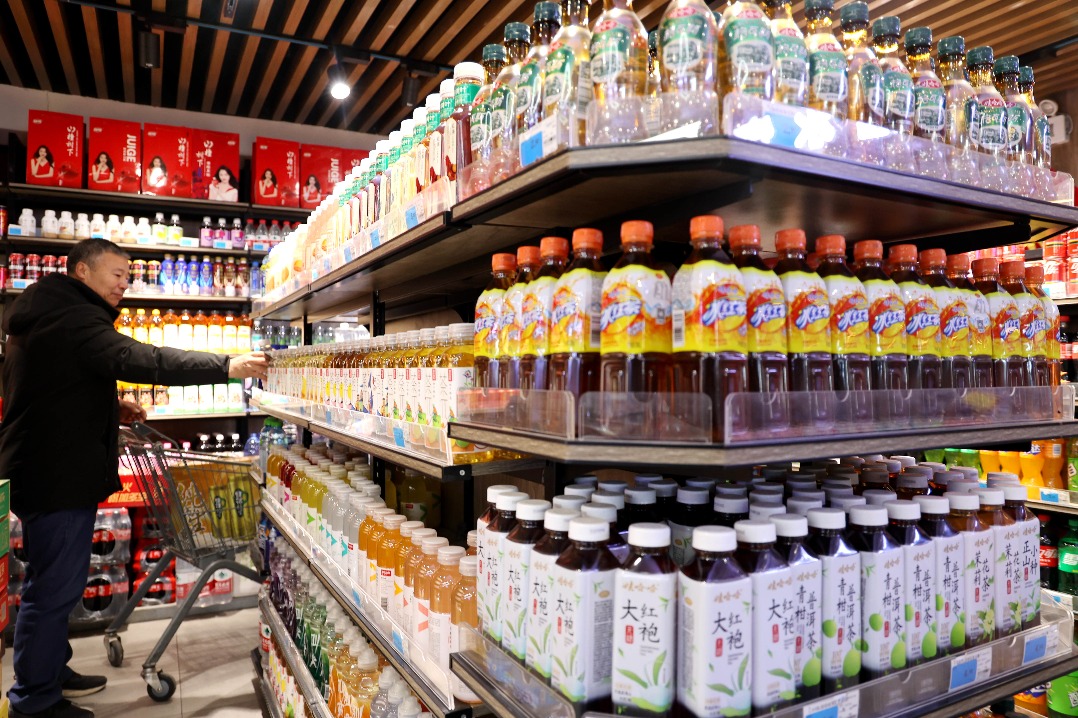Consumer electronics see electric performance
High-tech gadget purchases, including via trade-ins, boosting consumption


China's consumer electronics sector is witnessing a remarkable upswing, on the back of technological innovation and favorable policy support to spur consumption, officials and company executives said.
Since February, China's consumer electronics sector has seen its industry index surge 11.7 percent, said Shenwan Hongyuan Securities.
E-commerce platform Tmall also reported a spike in sales between Jan 20 and Feb 9. Smartphone transactions rose over 41 percent, tablets over 72 percent, and smartwatches/bands in excess of 60 percent compared to the previous month.
The recovery in demand for consumer electronics has been driven by a combination of supportive government policies and tech advancements, experts said.
The electronics department of the Ministry of Industry and Information Technology said in an interview with China Daily that: "China's stable supply chain, recovering global demand and robust policy support have solidified its position as the world's largest producer of consumer electronics. Moving forward, the industry is poised to capitalize on opportunities brought by next-generation artificial intelligence, accelerating the adoption of new technologies and products while enhancing the resilience and security of the supply chain."
A key highlight of this year's policy initiatives is the introduction of subsidies for purchasing new digital products such as smartphones and tablets. During the Spring Festival period (Jan 28 to Feb 4), national smartphone sales revenue surged by approximately 182 percent, with over 4.5 million digital products sold. Sales of these products accounted for 45 percent of the total revenue generated from the trade-in program, said the National Development and Reform Commission.
The revitalization of the consumer market has also spurred growth in upstream supply chains, creating new opportunities for related sectors. As of the end of 2024, China had 1.79 billion mobile phone users. If 10 percent of these users participate in the trade-in subsidy program, it could generate a market size of hundreds of billions of yuan for smartphone replacements, experts added.

According to the latest data from the China Academy of Information and Communications Technology and global market research firm Omdia, domestic smartphone shipments reached 314 million units in 2024, marking an 8.7 percent year-on-year increase. Notably, Chinese manufacturers accounted for nearly 60 percent of global foldable smartphone shipments, underscoring the country's growing influence in the global consumer electronics market.
Companies across the consumer electronics supply chain are leveraging these policy opportunities to accelerate product upgrades. For example, Sichuan Changhong Electric Co Ltd's intelligent manufacturing industrial park in Mianyang, Sichuan province, has increased its annual production capacity to 6 million units, reducing delivery times by over 50 percent.
Zhu Xuewen, head of Changhong Meiling's China marketing division, said: "The 2025 subsidy policy is driving the market toward high-end, intelligent and green products. Enterprises are focusing on green supply chains, government-enterprise subsidies and technological innovation to capture new market opportunities."
Similarly, Hu Baishan, executive vice-president and chief operating officer of Vivo, emphasized that consumers are increasingly demanding better performance, quality and innovative features. Vivo is investing heavily in areas such as battery life, communication, display and AI to meet these requirements across different price segments.
The industry's recovery is also reflected in its financial performance. As of Feb 20, 47 A-share listed consumer electronics companies had released their 2024 earnings forecasts. Among them, 24 companies reported a year-on-year increase in net profit for the fourth quarter, with seven expecting surges of over 100 percent.
Ma Beibei, director of the electronic manufacturing research office at the China Center for Information Industry Development, said that consumer electronics products, which directly serve end-users, have a significant impact on upstream and midstream industries. The trade-in policy has not only boosted sales of products like TVs, computers and smartphones, but also driven market expansion and technological upgrades for related components.
From foldable smartphones to AI-powered devices, Chinese consumer electronics companies are leading the charge in innovation. In 2024, Chinese manufacturers dominated the global foldable smartphone market, accounting for nearly 60 percent of shipments. Additionally, Chinese brands occupied eight of the top 10 spots in the global smart robot vacuum cleaner market in the third quarter of 2024, with a combined market share exceeding 60 percent, data from research companies Omdia and International Data Corp showed.
The rapid adoption of AI technology is expected to unlock further opportunities across the supply chain. Ma from the China Center for Information Industry Development highlighted that AI-powered terminals, including smartphones, computers and even AI glasses, are gaining traction. In the future, AI is expected to find applications in humanoid robots, smart home devices and more.
The recovery in the smartphone sector, with its extensive supply chain encompassing thousands of components and parts, not only reflects reviving consumer demand, but also generates new growth opportunities for upstream suppliers.
According to Kaiyuan Securities, the combination of AI-driven smartphone upgrades and government incentives is expected to significantly boost domestic smartphone sales in 2025. This, in turn, is likely to enhance the performance of upstream component and chip manufacturers, especially when considering operational utilization rates.
Lens Technology, a key player in the consumer electronics supply chain, highlighted that the government's inclusion of smartphones in the trade-in subsidy program has created a synergy between policy stimulus and product cycles. This is anticipated to effectively ignite market enthusiasm and present new development opportunities for the consumer electronics industry. Lens Technology has expressed a readiness to capitalize on this wave of innovation.
At a recent earnings call on Feb 12, Zhao Haijun, co-CEO of Semiconductor Manufacturing International Corp, a leading semiconductor maker, said that the national consumption stimulus policy has led to a strong willingness among clients to replenish inventory. This has resulted in a surge of urgent orders in consumer electronics, internet and smartphone sectors, causing the traditionally slow first quarter to be unexpectedly robust.
However, some industry insiders caution that the impact of the subsidy policy on upstream supply chains may take time to fully materialize. The subsidies, available in most regions until Dec 31, 2025, are allocated on a first-come, first-served basis, with a total cap on funds.
Despite the positive short-term effects, there are concerns about the long-term efficacy of the subsidy policy. Qi Yingnan, an independent industry analyst, believes that while the subsidies aid the transition from traditional to AI smartphones, the strategy remains a short-term market stimulus. Although it may lead to a temporary spike in replacement demand, particularly boosting sales in the first half of 2025, consumer habits and product choices are ultimately driven by personal needs and product innovation.
Despite challenges, experts believe that China's consumer electronics sector is well-positioned to maintain its global leadership thanks to its comprehensive supply chain, innovative enterprises, vast market size and ongoing policy support.
Looking ahead, the MIIT said that China will seize opportunities presented by next-generation AI, strengthen R&D in new technologies and products, and promote the construction of new ecosystems. By enhancing the quality of innovative and user-friendly consumer electronics, China aims to tap into both domestic and international markets, bolstering its global competitiveness.
"At the same time, we will continue to strengthen collaboration across the entire supply chain, improve resource allocation and utilization efficiency, and enhance the resilience and security of the industrial chain. This will provide a solid foundation for the high-quality and sustainable development of the consumer electronics sector," the electronics department at the MIIT added.
masi@chinadaily.com.cn




































